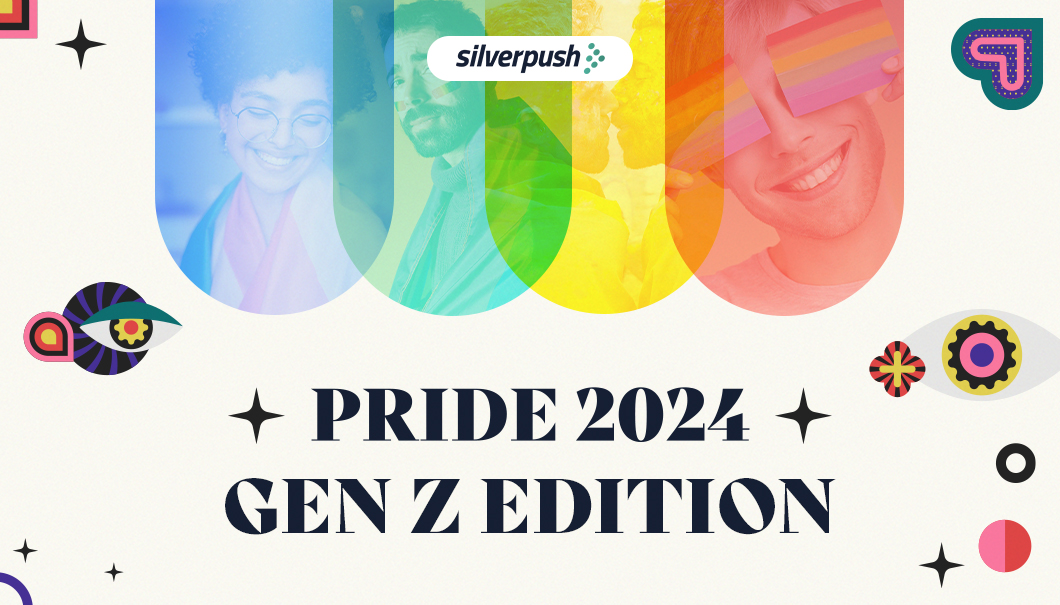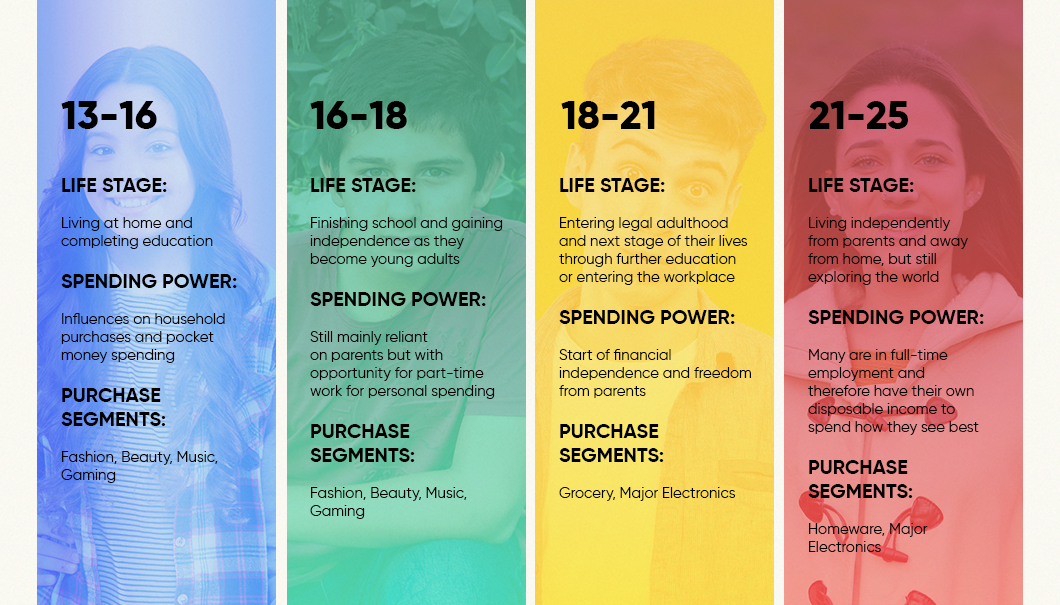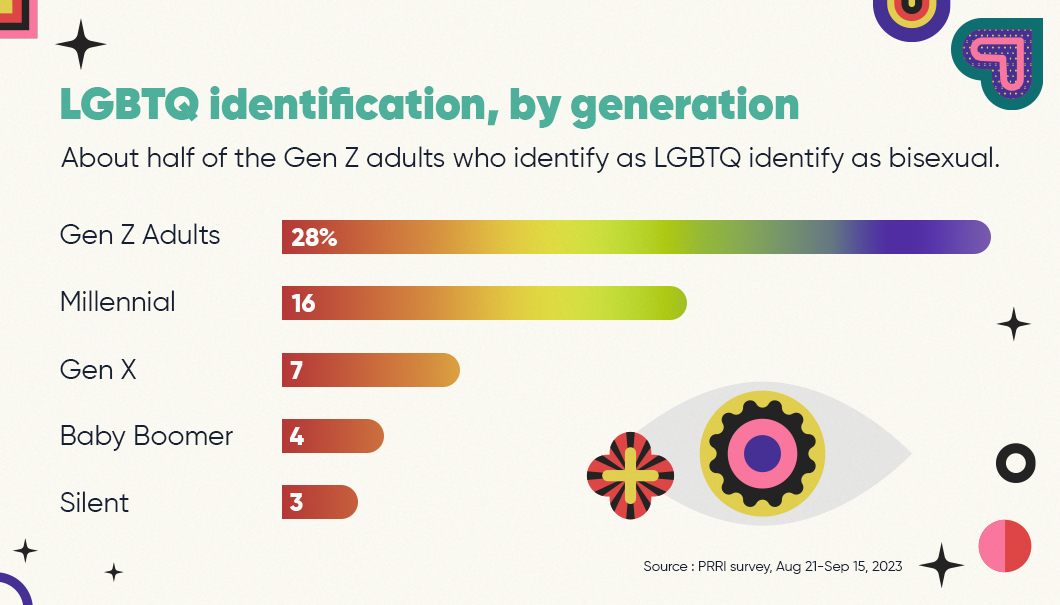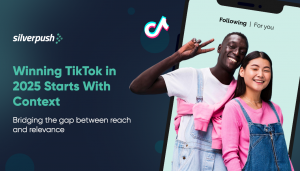Pride 2024: Gen Z Edition | 08 May, 2024

Pride holds profound significance for young people, regardless of their LGBTQ+ status. It transcends mere symbolism, embodying a celebration of inclusivity and love. However, Gen Z is increasingly scrutinizing the authenticity behind corporate support during Pride. A superficial display, such as a rainbow logo, no longer suffices to demonstrate alignment with their values. Discover how your brand can genuinely participate in the celebration of Pride month without resorting to tokenism.
Gen Z and Pride: What it Means to Them?
Gen Z, the approximately 67 million teens and young adults born after 1996 is steadily gaining prominence across social, political, technological, and cultural landscapes. With their increasing eligibility to vote, emergence as heads of households and primary decision-makers, and recognition of the power they hold through digital platforms, particularly social media, GenZ is asserting its influence in multifaceted ways.

Regardless of their own personal sexual orientation, Gen Z overwhelmingly stands as allies to the LGBTQIA+ community, with only 18% holding the belief that homosexuality is “wrong.” Moreover, a greater portion of Gen Zers (37%) acknowledge that gender exists on a spectrum compared to those who adhere to the binary concept of gender (31%).
Given the fluidity and openness surrounding sexual and gender identities within this generation, brands face the challenge of breaking corporate norms to authentically connect with LGBTQIA+ Gen Zers and their allies. For instance, research by Horowitz reveals that 23% of Gen Zers prefer to be asked their preferred pronouns rather than having their gender assumed. This indicates a need for brands to reconsider how they address gender and identity in their messaging and creative offerings, especially on social media platforms.
Additionally, McKinsey’s research highlights that 70% of Gen Z consumers actively seek out ethical brands. Mere symbolic gestures, such as posting graphics on Instagram, no longer suffice. Gen Z demands tangible information and concrete actions to substantiate brands’ ethical claims.
Where Should Brands Be Talking?
GenZ isn’t just using YouTube for the videos; they’re actively engaging with the ads as well. According to research by Precise TV and Giraffe Insights, six in 10 teens opt to watch YouTube ads rather than skipping them, with almost half able to recall ads they’ve seen on the platform.
Why we care. This data underscores the importance of brands seeking to connect with Gen Z to reevaluate their advertising strategies. Shifting ad spending from traditional TV to YouTube could yield stronger engagement, recall, and influence on purchase decisions.

Our take: In response to evolving consumer identities, it’s crucial for the marketing and advertising industry to prioritize inclusivity and diversity. Beyond being the most racially and ethnically diverse American generation ever, over 1 in 4 (28%) Gen Zers self-identify as LGBTQIA+.
How can Brand Connect with Gen Z?
GenZ values brands that prioritize personalization and individualization, seeking tailored products and services along with personalized brand communications. A significant 38% of Gen Z prefers personalized ads, nearly double the preference of Millennials, driven partly by the desire to explore new brands and products.
Hyper-contextual and creative intelligence solutions offer advertisers a streamlined path to connect with their target audience. Contextual intelligence, powered by AI, delves deep into video content to pinpoint highly relevant contexts aligning with brand objectives. Advertisers can further fine-tune campaigns with custom inclusion and exclusion themes to ensure ads appear in appropriate contexts.
To engage Gen Z effectively, innovative approaches are vital. With consumers’ increasingly short attention spans, turning them from passive observers into active participants boosts engagement, consideration, and purchase intent. Among various creative intelligence solutions, interactive video ads shine. These innovative AI solutions enhance existing brand videos with interactive layers, allowing consumers to engage directly with the content.
Conclusion
In conclusion, as Gen Z trends continue to shape the cultural landscape and assert their influence across various spheres, brands must adapt and evolve to authentically connect with this dynamic generation. By prioritizing inclusivity, diversity, and ethical practices, and leveraging innovative marketing strategies tailored to Gen Z’s and Pride preferences, brands can forge meaningful connections and thrive in an ever-changing marketplace.
For AI-driven, Gen Z-focused advertising solutions, reach out to Silverpush.

BLOGS
3 Takeaways from Cannes 2025: From Performance to Relevance
Last month, Silverpush team kicked off the #SummerOfContext in a big way at the Cannes Lions International Festival of Creativity 2025. To start off the week, we launched a brand new contextual targeting solution for TikTok to help brands with brand safety and higher relevance. We also announced our ...

BLOGS
Partner Spotlight: Ben Salaman, Senior Strategist at PB&
1. Tell us about your agency. What makes you stand out? PB& is a small, independent agency that was founded by people who have spent a lot of their careers in larger agencies. We saw that creativity and efficiency often tend to suffer due to silos, so our founder decided to ...

BLOGS
How to Win at TikTok Advertising in 2025 With Contextual Targeting
TikTok is no longer just a platform for viral dances and trending audio, it’s now a serious force in the advertising world. With nearly 2 billion users and over 1.8 billion reachable through ads, it’s where your audience is spending their time. But while TikTok delivers unmatched reach, it hasn’t ...







